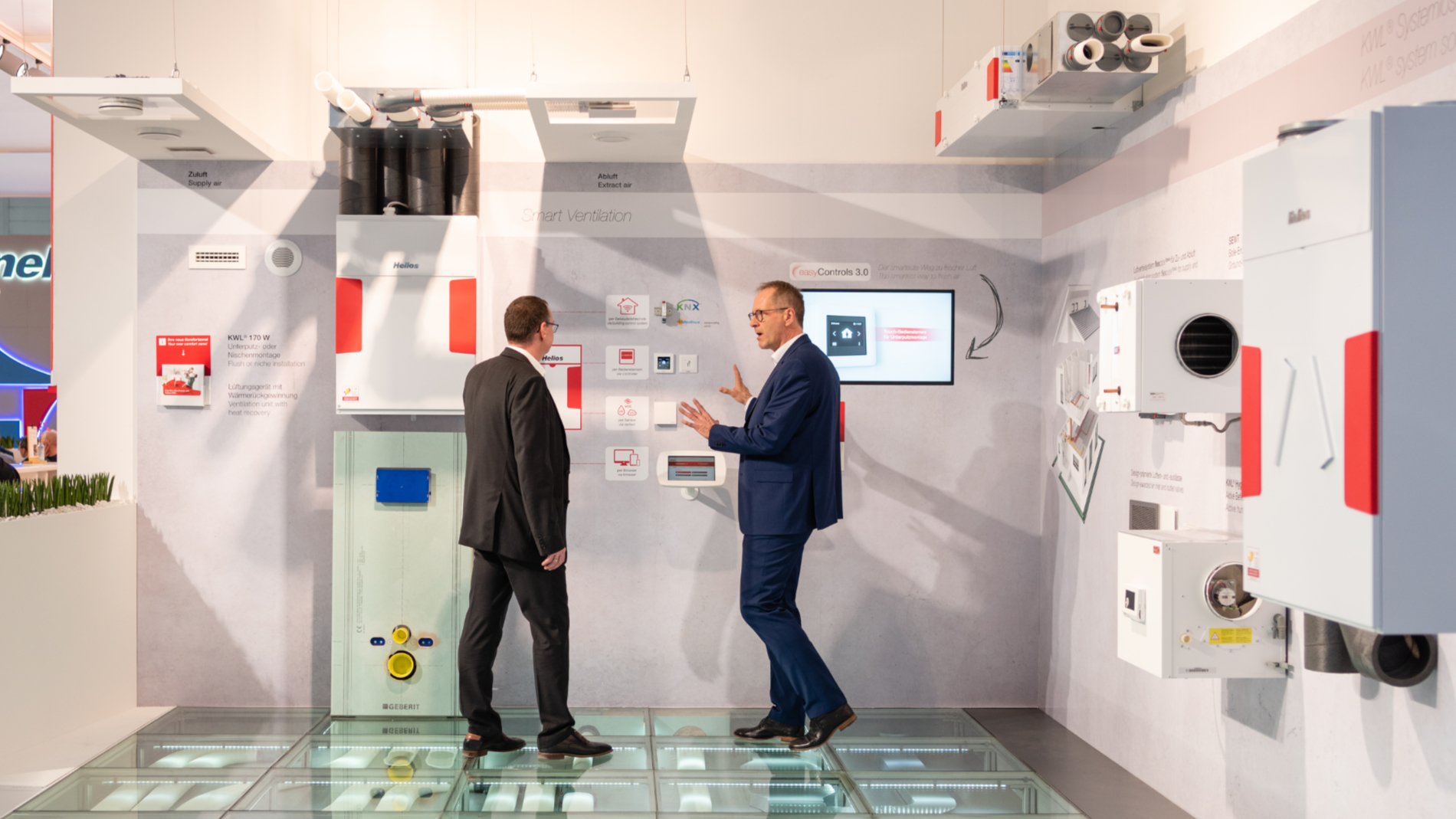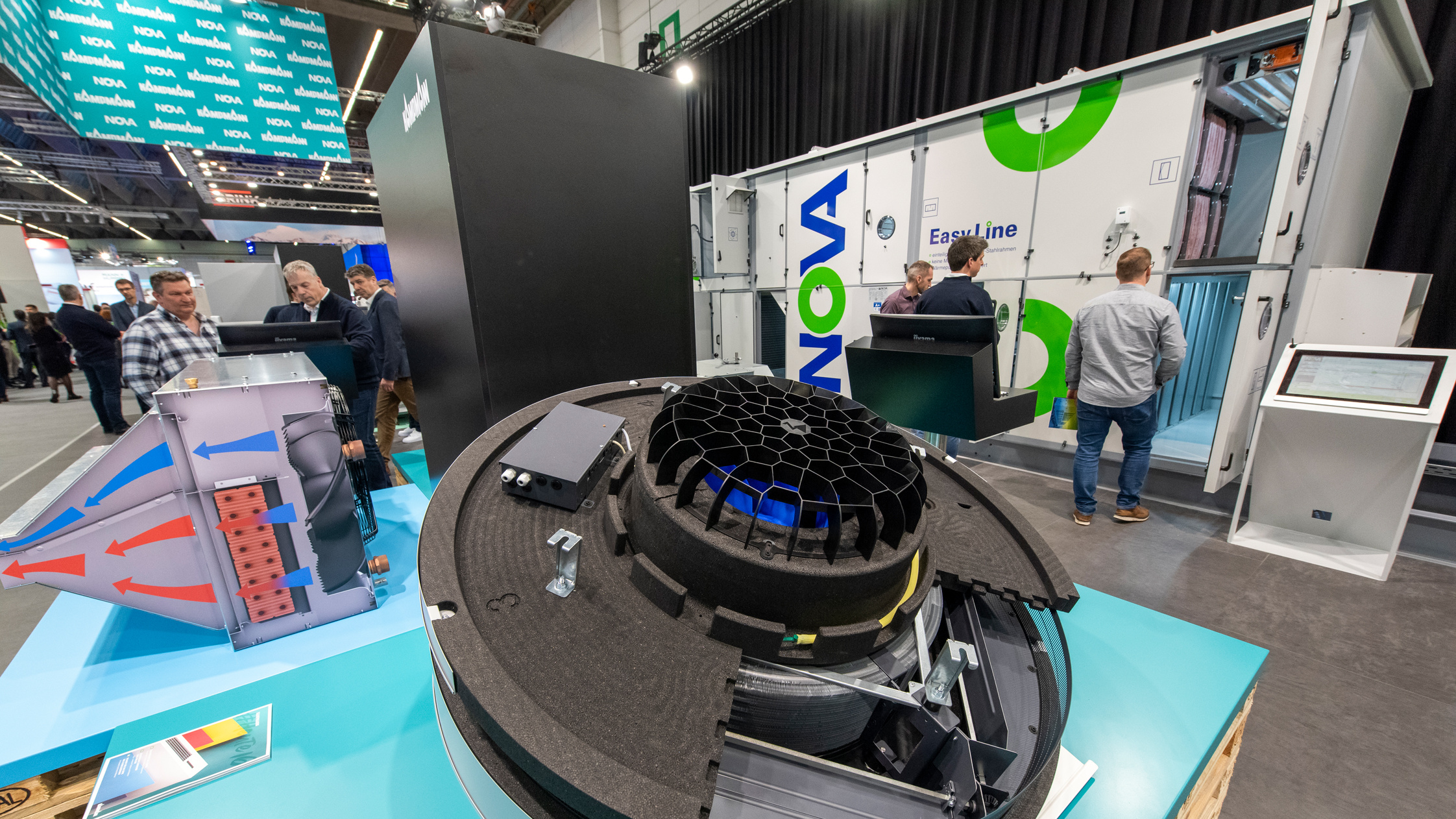Air-purification systems not only contribute to a feeling of well-being but also to better health.

The quality of the air inside our homes has a decisive influence on our sense of well-being, our health and the quality of life of the people living there. Modern ventilation systems and innovative ventilation technology, as presented at ISH, the world's leading trade fair for the sector, set new standards in terms of efficiency, comfort and sustainability.
Controlled ventilation is the key to a healthy indoor climate in residential buildings. Modern ventilation systems for the home ensure a continuous exchange of air and significantly improve air quality. These systems not only remove odours and airborne pollutants but also filter out allergens and particulate matter. Moreover, they also regulate humidity and thus help stop mould forming. An indoor humidity level of around 40 percent also reduces the survival rate of influenza viruses and similar pathogens.
Centralised or decentralised
Several options are available when it comes to choosing a suitable ventilation system for a residential building:
- Central ventilation systems represent a comprehensive solution for larger residential units or apartment buildings. They control and optimize air quality throughout the building from a central point.
- Decentralised ventilation systems are ideal for individual rooms or smaller apartments. They permit demand-based ventilation without the need to install costly ducting and are particularly suitable for retrofitting in existing buildings.
Air-purification systems: for the highest expectations on air quality
Modern air-purification systems do more than just ventilate. Equipped with high-quality filters, they can remove almost all pollutants, pollen and particulate matter from the air, which is particularly beneficial for allergy sufferers and those with respiratory diseases. Integrating ventilation and air-conditioning systems into the smart home or a home energy management system (HEMS) also means they can be controlled on the basis of criteria such as energy efficiency, indoor air quality, the presence of people and the residents' personal preferences. In other words, indoor air can be adapted to the circumstances and specific requirements of the residents.
Energy-efficient ventilation: focusing on sustainability
The latest generation of ventilation systems for residential buildings is geared towards energy efficiency. Heat-recovery systems can reduce energy consumption by up to 90 percent by using heat from the outgoing air to preheat incoming fresh air. Energy-efficient ventilation like this not only helps to lower operating costs but also reduces the building's environmental footprint.
An investment in health and comfort
Investing in modern ventilation technology for residential buildings pays off in more ways than one: such technology not only improves the quality of life and health of residents but also helps maintain the property's value. At the same time, it promotes climate protection by maximizing energy efficiency.
As a platform for innovative indoor air solutions, ISH presents the latest technologies and trends in this sphere. At the trade fair, visitors can obtain a comprehensive overview of centralised and decentralised systems – from energy-efficient ventilation to intelligent control systems for a perfect indoor climate.
